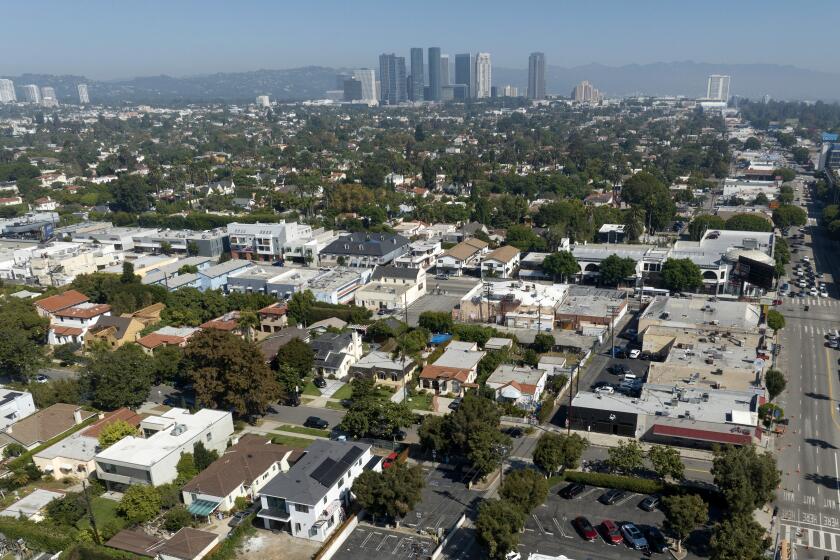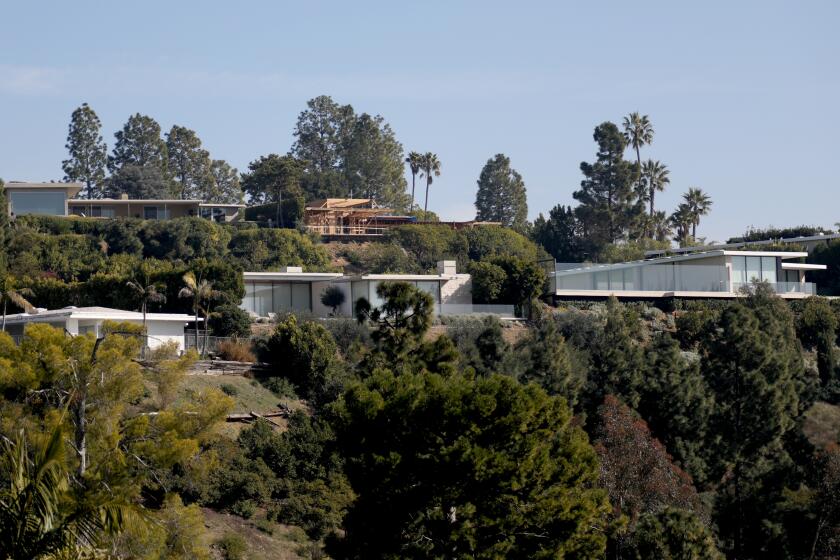
- The Silicon Valley community of Portola Valley is in the midst of a financial emergency after years of spending on stalled state-mandated affordable housing plans.
- The 4,400-person town, which counts LinkedIn co-founder Reid Hoffman and other tech executives among its residents, faces deep-pocketed resistance from opponents to housing developments who’ve threatened lawsuits and launched political action committees.
- Some residents believe the town’s location amid wildfire and seismic risks makes it unrealistic to develop denser housing.
PORTOLA VALLEY, Calif. — On a Sunday afternoon a few years ago, about a dozen neighbors held a meeting with Craig Hughes, who was then the mayor of Portola Valley. The backyard gathering in the small, wealthy Silicon Valley enclave was civil, Hughes said, but his constituents left an unmistakable message. If Hughes and other town leaders produced a state-mandated affordable housing plan that wasn’t to the residents’ liking, they should expect a battery of litigation that could lead to Portola Valley’s bankruptcy. In a sign of their seriousness, one couple already had hired an attorney well-versed in California politics, the former mayor of San José.
“It was a warning,” Hughes recalled.

Now, after years of housing disputes, Portola Valley finds itself on the brink of insolvency. The town of 4,400 people has spent more than $1 million on consultants, 150 hours in public meetings and still hasn’t produced an affordable housing blueprint that’s passed muster with the state. More than 70% of town staff have left in the meantime, with remaining employees, according to Portola Valley’s recently departed town manager, “literally just keeping the lights on.”
Last month, the town cut its $10-million budget by 25%, slashing road repairs and eliminating vacant positions. It still faces future deficits. Some in Portola Valley have raised the prospect of merging with a neighboring town.
Alongside the spending issue, strife over housing projects have dominated town politics. Residents have opposed proposals to build homes for Stanford University professors and low-income buyers through a local church’s partnership with Habitat for Humanity.

The contours of Portola Valley’s development debates would seem familiar in many communities across California. Tensions over existing residents’ concerns about parking, crowding and ambiance conflict with the pressure for new housing. But Portola Valley, Hughes said, is one of the few places where town residents’ bank accounts far outstrip the town treasury, giving individuals outsize power to shape their surroundings and pressure their leaders.
It’s as if the adage that you can’t fight City Hall is turned on its head. In Portola Valley, City Hall can’t fight you.
“There are no neighborhoods where there’s not a billionaire who might sue you,” Hughes said.
The city of Norwalk has passed one of California’s most drastic anti-homeless laws in recent memory. Gov. Gavin Newsom is threatening a lawsuit and homeless people wonder where they will sleep.
Portola Valley sits in one of the most economically productive regions on Earth, five miles from Stanford and less than an hour by car to San Francisco. Yet the town’s towering oak trees, winding mountain trails and ranch-style homes on multiacre lots lend Portola Valley a sense of remoteness that’s made it one of Silicon Valley’s most sought after addresses.
The median home value, per Zillow, is approaching $4 million. Tech company titans Reid Hoffman of LinkedIn and Vinod Khosla of Sun Microsystems keep houses there. In the streets, you’re as likely to encounter people riding horses as those driving Porsches.

Recent state laws beefed up requirements for all California communities to zone for more housing. Portola Valley saw its allocation from the previous planning period quadruple to 253 new homes.
The figure, which exacerbated Portola Valley’s housing squabbles when it was finalized in late 2021, provided an unrealistic standard for denser development given the town’s safety issues and lack of infrastructure, said Rebecca Flynn, a newly elected council member. The San Andreas Fault bisects the town and many residential areas rely on septic fields rather than sewer systems. Flynn said her home insurer recently declined to renew her policy, citing wildfire risk.
“The state just doesn’t understand,” said Flynn, the founder of a popular online town message board. “They say, ‘Oh well, the billionaires live here so they should be able to build all sorts of stuff.’”

Still, Flynn said some residents, especially the wealthiest and longest tenured, have resisted any change.
The Stanford development, where the university wants to build 27 single-family homes for faculty and a dozen apartments for low- and moderate-income residents on a portion of 75 acres it owns, was under discussion for more than eight years before the town approved it this month.
Flynn recalled opponents objecting that the housing might affect environmentally sensitive habitat for a tiny rodent, the San Francisco dusky-footed woodrat — an example, she said, of residents attempting to use whatever means possible to stymie projects. She said they did the same thing at the town’s architectural review board, where she used to serve.
“Every project that comes up you’ve got the neighbors complaining about whatever it is that people want to do on their private property,” Flynn said. “They feel entitled.”
Under construction now is Portola Valley’s first affordable housing project, 16 apartments laid out in a series of small buildings next to a grocery store. A resident and venture capitalist acquired the land to develop it for adults with developmental disabilities after finding a lack of housing options for his daughter who has Down syndrome. To secure approval, the project took advantage of state laws that limited the town’s ability to intervene.

Less certain is a proposal on religious property at the edge of town. The Ladera Community Church has linked up with Habitat for Humanity to develop a half-dozen homes that would be sold to low-income residents. The church, which has housed foreign refugees for decades in a cottage on the property, sees the project as an extension of its mission, said Mike Smith, the church’s lay leader.

Yet in October 2023, the Westridge Architectural Supervising Committee, an association of homeowners covering the neighborhood, sent the church a letter stating that the project would violate the association’s private restrictions that require only single-family homes on minimum 2.5-acre lots.
“We are responding here guided by our responsibility to 224 Westridge homeowners, and their mutual covenants to each other,” the letter said.
The church and association have yet to reach a deal, likely one of many agreements necessary before the project can break ground.
“I just think some people need to get off their high horse and realize that there’s people in need,” Smith said. “There’s not going to be one iota of change to quality of life.”
Homeowners association representatives could not be reached for comment.
With a key vote coming on a bid to rezone Los Angeles to add 250,000 more homes, city officials released a long-awaited report on the history of exclusionary zoning.
Rita Comes Whitney runs a nonprofit, Portola Valley Neighbors United, founded in 2019 after she said that town leaders weren’t answering questions about wildfire, seismic and other safety risks with the Stanford project and others. Comes Whitney, who lives in the Westridge neighborhood, said she had to follow detailed procedures within the homeowners association and the town to secure approval to build her own home in 2009.
Other projects, she argued, should be held to the same standards.
“We really want people to work with” the fire protection district, Comes Whitney said. “We want them to think about the geology, think about the distance between homes.”

Comes Whitney said she understood why those who met with then-Mayor Hughes a few years ago lawyered up. Without their knowledge, their properties appeared on a draft map of parcels that could be rezoned from allowing only single-family homes to higher densities, which would affect the future uses of their land.
“It’s everybody’s right to speak up for themselves,” Comes Whitney said.
Hughes said that the spring 2022 meeting came at a trying time. The town council, advisory committee members, consultants and staffers were scrounging for locations that could accommodate growth and identified that neighborhood because it was relatively flat. The proposal did not make it into the final plan.
Chuck Reed, San Jose’s mayor from 2007 to 2015, filed a massive public records request to the town on behalf of homeowners Robert and Karen Allen, asking for any communication about the zoning plans from the previous eight months. The Allens denied threatening the town with bankruptcy in an email from the time to Hughes and maintained they hired Reed simply to protect their rights. Neither the Allens nor Reed could be reached for comment.
Last month, a Los Angeles County Superior Court judge issued a moratorium on building permits in Beverly Hills as punishment for the city not passing a blueprint for sufficient affordable housing.
Town politics, as comprehensively chronicled in the Almanac local newspaper, exploded soon after.
A group of residents started a political action committee targeting Hughes and two other council members who were pushing for the broad rezoning efforts. The PAC raised more than $40,000 — compared with the $2,000 Hughes generated for his campaign — and papered voters with mailers. Hughes’ two colleagues declined to run for reelection and Hughes lost his bid.
When the housing plan was set to be voted on in spring 2023, council members instead called for further deliberations. By that point, the Portola Valley staff exodus was in full swing, causing the town to rely even more on costly consultants to develop a proposal.
State regulators signed off on the town’s housing blueprint this January only to revoke its approval less than two months later when they found Portola Valley had not followed through with rezoning deadlines.

This fall, the town’s finance and audit committee cited the time and money spent on the housing plan as a primary cause of the fiscal problems alongside increased costs for its policing contract with the local sheriff’s department. Besides the budget cuts, the town is exploring a tax increase for the 2026 ballot and council members have floated merging with the neighboring town of Woodside.
“We don’t have good sources of income,” said Flynn, the new council member. “We’re essentially a bedroom community.”
The town continues its scramble to get its housing plan reapproved before any financial or other penalties kick in.
At a recent meeting, the town’s interim planning director recommended that the council rezone a park site for low-income housing to appease the state. He acknowledged that many in Portola Valley didn’t want to see the park developed and that another volunteer committee had been meeting to find alternatives. But even if the property was rezoned, the planning director emphasized, the town remained its owner.
So Portola Valley’s government — and residents — would still control whether any housing gets built.
More to Read
Sign up for This Evening's Big Stories
Catch up on the day with the 7 biggest L.A. Times stories in your inbox every weekday evening.
You may occasionally receive promotional content from the Los Angeles Times.










